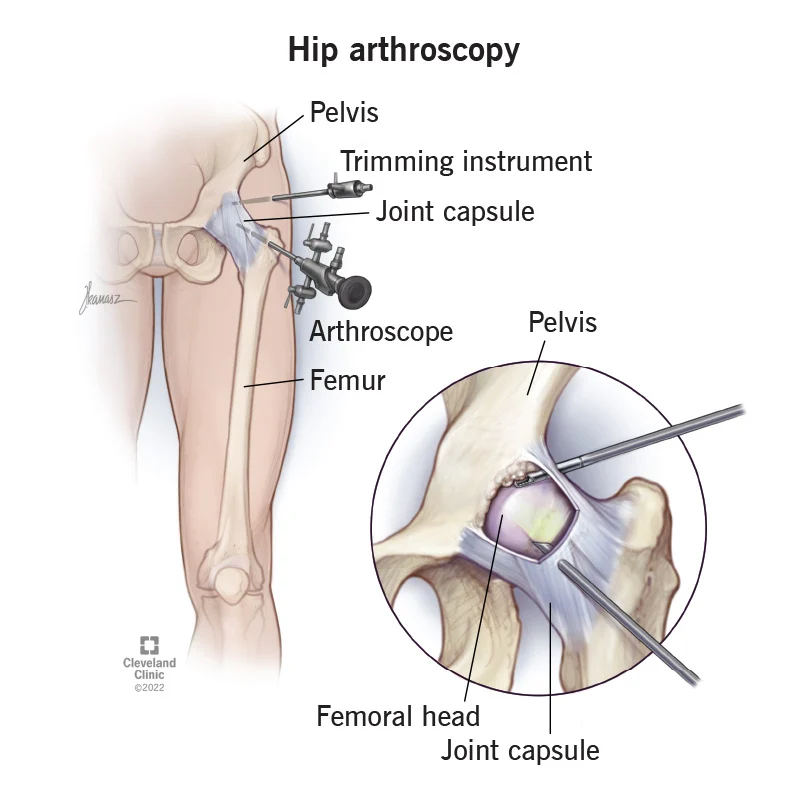Knee and hip arthroscopy are minimally invasive surgical procedures that offer effective treatment options for a variety of joint-related conditions. This guide will provide you with valuable information about these procedures, including their benefits, common indications, the surgical process, recovery, and expected outcomes.
Understanding Knee and Hip Arthroscopy:
-
What is Arthroscopy?
- Arthroscopy is a minimally invasive surgical technique used to diagnose and treat joint problems in the knee and hip.
- It involves using a small, flexible tube with a camera (arthroscope) to visualize and treat issues within the joint.
-
Common Indications:
-
Knee Arthroscopy:
- Meniscal tears
- Anterior cruciate ligament (ACL) tears
- Cartilage damage
- Synovitis
-
Hip Arthroscopy:
- Femoroacetabular impingement (FAI)
- Labral tears
- Hip impingement
- Cartilage injuries
Benefits of Knee and Hip Arthroscopy:
-
Minimally Invasive:
- Smaller incisions mean less tissue damage and faster recovery.
- Reduced scarring and post-operative pain.
-
Accurate Diagnosis:
- Arthroscopy allows for precise examination and diagnosis of joint conditions.
-
Targeted Treatment:
- The surgeon can repair, remove, or reshape damaged tissues during the same procedure.
-
Shorter Recovery Time:
- Most patients can return to normal activities sooner than with traditional open surgery.
The Arthroscopy Procedure:
Recovery and Rehabilitation:
-
Postoperative Care:
- Most patients can go home on the same day.
- Pain management and follow-up appointments are essential.
-
Rehabilitation:
- Physical therapy is crucial to regain joint strength and mobility.
- Specific exercises will be tailored to your condition.
-
Expected Outcomes:
- Relief from joint pain and improved function.
- The extent of recovery depends on the type and severity of the joint condition.
Conclusion:
Knee and hip arthroscopy offer a minimally invasive and effective solution for a range of joint problems. Discuss your symptoms and treatment options with a qualified orthopedic surgeon to determine if arthroscopy is the right choice for you. With proper preoperative assessment, skilled surgery, and postoperative rehabilitation, you can look forward to a healthier and more active future.

